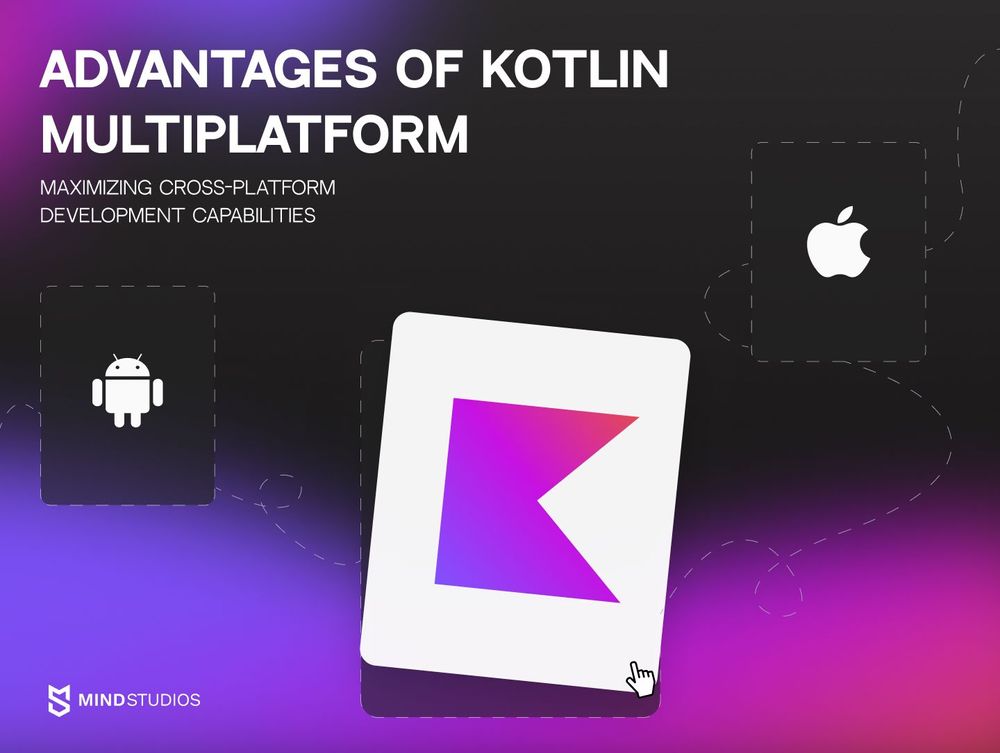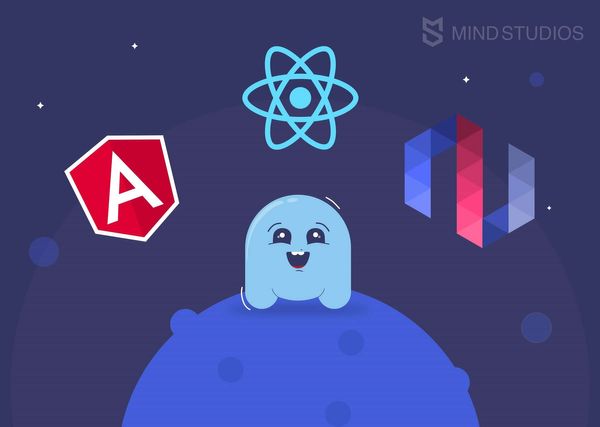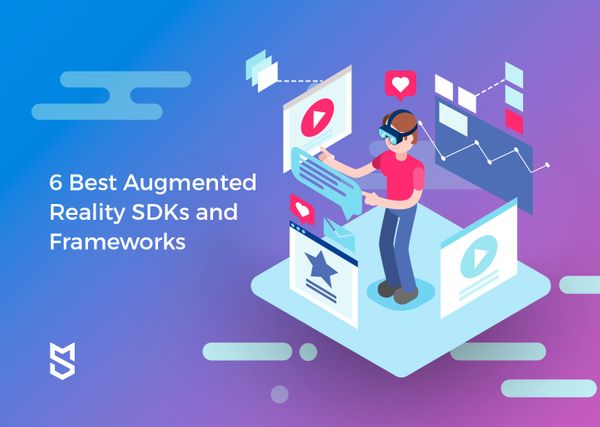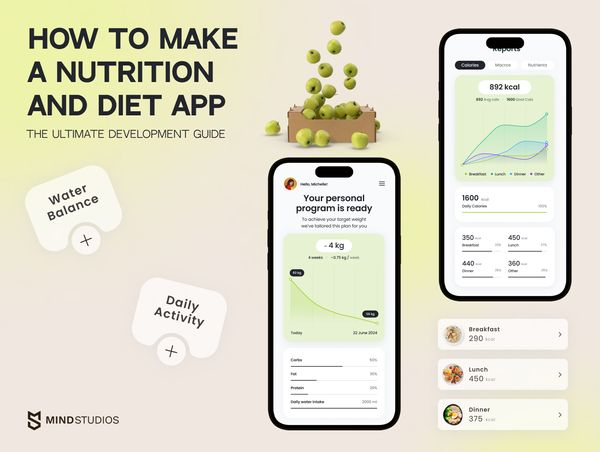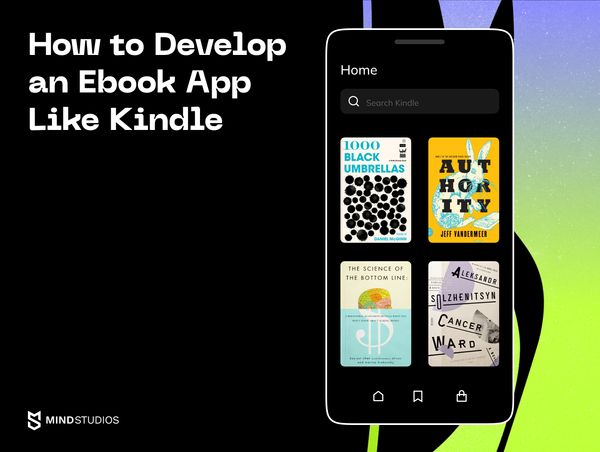
The cross-platform approach to building mobile apps shortens development time while improving resource allocation and maintenance efforts. This results in more efficiency and a faster time to market for your app. There are many great tools and frameworks for cross-platform development, but KMP and React Native stand out as some of the most popular and efficient choices, providing developers with the flexibility to create outstanding apps with relative ease.
We talked to Mind Studios mobile development experts to examine the main benefits and drawbacks of both methods. After years of working with different mobile technologies, our team has now also explored KMP and marked it as a go-to toolkit for cross-platform mobile development since it left Beta. Continue reading, and we will explain why.
Highlights:
- Global market growth: Global mobile application market continues to grow, expected to reach around $745.06 billion by 2032. This staggering growth underscores the importance of cross-platform development frameworks like Kotlin Multiplatform and React Native in meeting the demands of this expanding market.
- Performance: React Native offers nearly equivalent performance to native apps, operating quicker than hybrid apps. However, Kotlin Multiplatform allows the interchange of logic between Android and iOS applications, leveraging Kotlin's ability to compile for multiple platforms and resulting in native libraries that can be utilized by native apps.
- Development time and costs: React Native and Kotlin Multiplatform both offer cost-saving potential, but the choice depends on various factors like development time, expertise, and project needs. React Native is great for quick prototyping and minimum-viable products, while Kotlin Multiplatform streamlines development by allowing code to be written once for all platforms without the need for bridges, potentially reducing long-term costs.
React Native vs Kotlin comparison
React Native and Kotlin are both open-source projects. However, one is a framework, and the other is a software development kit (SDK) based on the Kotlin programming language. If you’d like a quick rundown of the two, here’s a comprehensive comparison between Kotlin Multiplatform and React Native:
| Overview of React Native vs Kotlin Multiplatform | ||
|---|---|---|
| Technology | React Native | Kotlin Multiplatform |
| Programming language | Javascript | Kotlin |
| Created by | Meta (formerly Facebook) | JetBrains |
| First release | Apr 2015 | Nov 2023 (1.0 release) |
| Components library | Very large inclusive library | Small but fast-growing library |
| Learning curve | Easy to learn, especially if you've used React or Javascript before. | Kotlin syntax is similar to Java and Swift, making it easy to learn for mobile developers. |
| Ecosystem | Mature, used in production in many big companies around the world, many packages are available | Relatively new, supported by Google, and growing |
| UI components | Uses native components (via bridge) | Platform-independent UI components |
| Community support | Large community with extensive resources | Growing community with increasing support |
| Tooling support | Well-established tooling ecosystem | Growing tooling support |
| Debugging | Debugging tools available in browsers | Debugging tools available in IDEs |
| Platform limitations | Access to device features may be limited | Full access to device features |
| Compilation time | Fast compilation time | Slower compilation time due to multiplatform nature |
React Native
React Native is a framework for creating mobile applications with JavaScript and React. It enables developers to reuse the same codebase for iOS and Android apps, saving time and resources. It also has a huge and active community, so numerous resources and third-party libraries are available to assist developers.
React Native (RN) was initially launched on March 26, 2015. React Native was built by the developer community, specifically, Meta (formerly Facebook), to produce genuine, native mobile apps for Android and iOS while also reusing code between mobile and web apps. It creates user interfaces that are optimized for mobile platforms. Although there are many React Native alternatives, RN enables developers to create native mobile apps using their long-time favorite, JavaScript, making this framework extremely popular.
Furthermore, React Native simplifies code exchange between Android and iOS. Developers can easily share it between platforms. It is also possible to create sophisticated mobile UIs using the declarative components of React Native, resulting in a great native-like app.
Kotlin Multiplatform
Kotlin Multiplatform is an SDK or development tool collection that allows you to execute Kotlin across several platforms. Among its technologies is linguistic compatibility between Kotlin and the languages of other supporting platforms. Indeed, while most languages allow you to call libraries written in another language (very frequently, just C is supported), each library and function requires time-consuming work. Kotlin Multiplatform's interoperability tools offer this code automatically and in both ways.
JetBrains created, designed, and sponsored the Kotlin programming language. When Google started supporting Kotlin as the Android studio's official language, it began gaining steady popularity. Regarding the SDK itself, here are some of the main benefits of Kotlin Multiplatform:
Modular integration: Developers can customize their apps by integrating multiple modules and altering the coding to fit user requests and preferences with KMP.
Native UI: Cross-platform apps always have an advantage in terms of native UI. Kotlin gives developers more access to its native UI than React Native and other cross-platform frameworks, resulting in higher overall application performance.
Frontend and backend development: KMP allows you to handle server-side operations effortlessly. In contrast, React Native requires a separate technology stack to do so.
This SDK also supports different development environments, such as Android Studio. Using Kotlin for business app development can help your developer gain support across numerous IDEs (Integrated Development Environments) and tools to construct your Android project. Kotlin has an extremely clear codebase. It is simple and accurate, resulting in fewer potential errors and more stable code in production.
One significant advantage of KMP over React Native is that it supports Android and iOS development. React Native requires two unique codebases for each platform, but Kotlin cross-platform tools allow you to share code between many platforms.
A business can save time and money while expanding its audience reach and improving efficiency by creating an app that works seamlessly across multiple platforms. To put numbers into perspective, in 2023, the global mobile application market was valued at $227.32 billion. The market is predicted to grow at a 14.1% CAGR (compound annual growth rate) between 2024 and 2032, reaching a value of around $745.06 billion by 2032.
Performance comparison
When it comes to developing mobile applications, performance is crucial. In this part, we will compare the performance of React Native and KMP for cross-platform development, as understanding their different advantages and drawbacks will help you make an informed decision for your project.
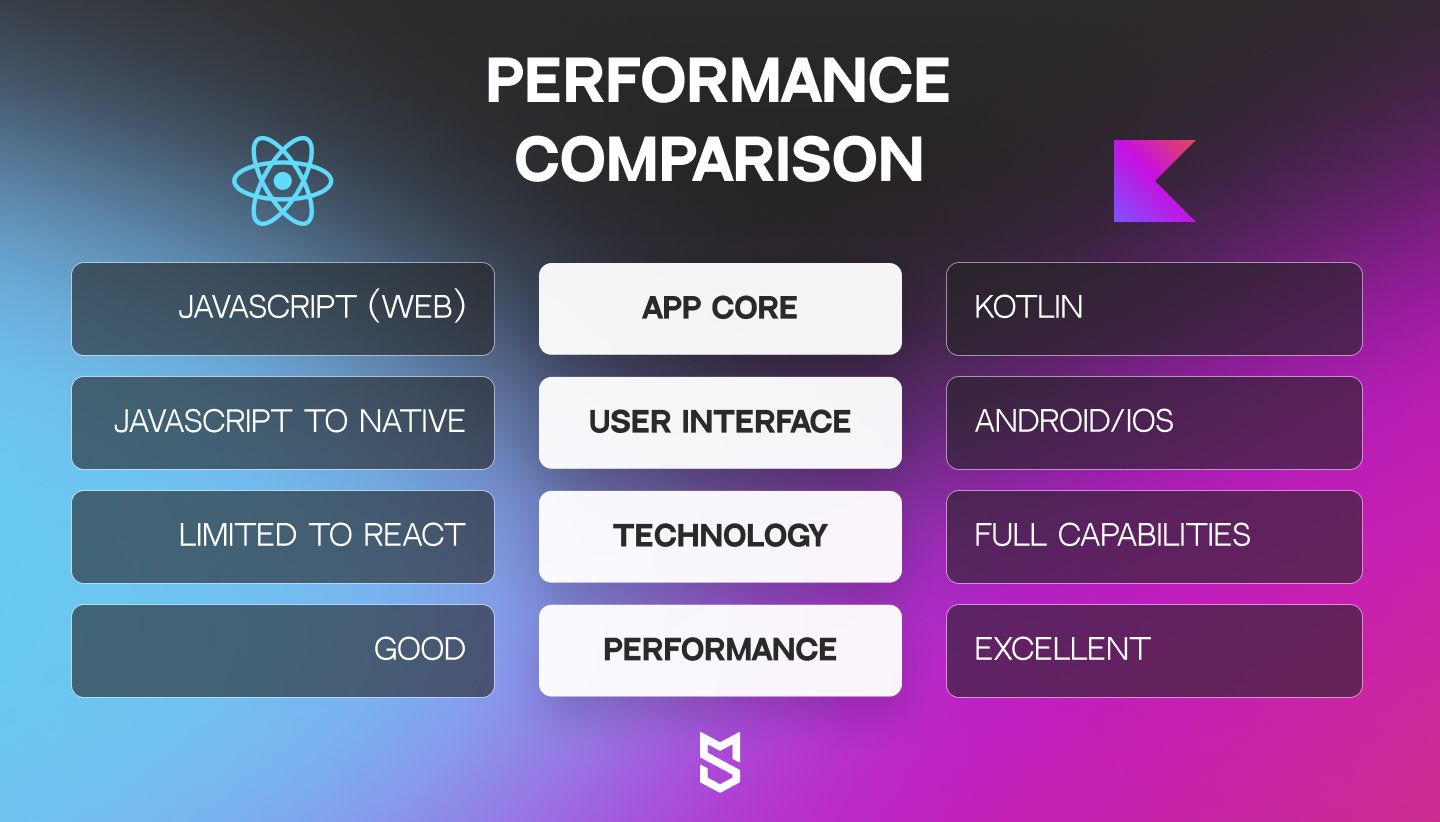
React Native
Native apps developed using React Native are nearly equivalent to those made with native technologies. As a result, they operate quicker than hybrid apps, which include code that runs within a platform-specific web component.
Developers can use JavaScript and native modules to create native-feeling and looking iOS and Android apps. And React Native provides a native-like experience across both platforms.
While React Native performs better than most cross-platform development frameworks, it is still not as good as native app development using platform-specific tools and languages.
Kotlin Multiplatform
Kotlin Multiplatform allows you to interchange logic between Android and iOS applications. It takes advantage of Kotlin's ability to compile for several platforms, resulting in native libraries that may be used by native apps.
By default, KMP does not provide a mechanism to share UI. Thus, the business logic (API calls, database caching, business rules, and validation) is written once and shared between Android and iOS, but the interface is native.
JetBrains has been working hard on a multiplatform UI framework that can be used with KMP to enable you to develop cross-platform applications in Kotlin. The outcome of this effort is Compose Multiplatform, a declarative framework for sharing user interfaces across various platforms. Although it was just released for production usage, it will support Android (complete support because it is built on Jetpack Compose), desktop, web, and iOS platforms (which has recently come out of beta).
KMP SDK: Using this SDK to share the app's business logic is the correct thing to do for mobile teams. All API calls, database structure, and app flow are the same across different platform. Thus, having them build one codebase rather than dealing with two distinct codebases is a significant advantage for developers.
Integration with Android is equally smooth, and working with iOS is simple in KMP, albeit it does need some additional effort. Performance-wise, we can only anticipate the latter to improve in the future.
To summarize the performance side, Kotlin and React Native are both strong options for building mobile apps; picking one over the other requires weighing your project's requirements. Suppose you have experience with JavaScript and are looking for a way to develop an app that works on several platforms. In that case, React Native might be the way to go. However, Kotlin should be considered if you seek a more expressive and performant language.
Development experience
Regarding mobile app development using React Native and Kotlin, both offer advantages and disadvantages. React Native excels at offering cross-platform features while enabling native functionality via third-party libraries or custom modules. One of our primary focus areas is mobile development. Despite having Android and iOS development teams, we are continually looking for new ways to optimize and improve our projects. Our mobile development experts are already familiar with KMP and understand how to fully use this SDK. In fact, thanks to their expert advice, we can write this piece. We would be happy to speak with you if you are still unsure whether KMP is the appropriate solution for your project.
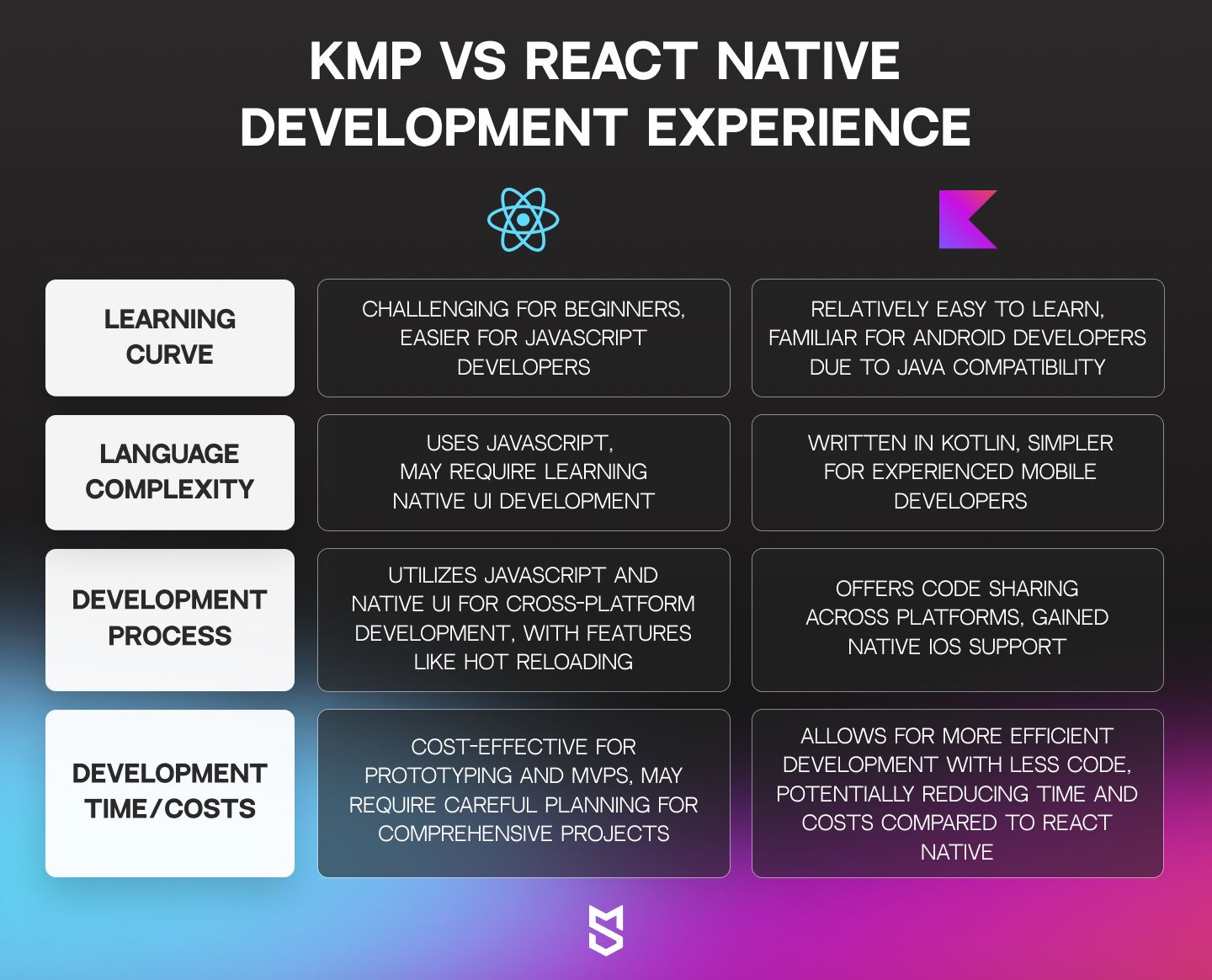
Learning difficulty
React Native
Despite its robust library support and JavaScript foundation, React Native is not without a challenging learning curve. While utilizing React Native to create apps for many platforms, developers familiar with JavaScript will not encounter significant challenges. Developers with experience are easy to come by because of the framework's widespread usage and the many opportunities it presents.
Kotlin Multiplatform
Converting to Kotlin is relatively easy because of its shorter learning curve. Many programmers consider Kotlin beginner-friendly and easy for Android developers to pick up because of how well it works with Java.
Developing cross-platform apps requires a basic grasp of programming languages, which vary in complexity. React Native is written in JavaScript, but Kotlin's syntactic language might initially be difficult to grasp. However, it is relatively simple for developers with experience developing mobile applications to understand.
Development process
React Native
With some experience, developers may use JavaScript and native UI to create apps for both iOS and Android using the same codebase. Due to its native development capabilities, ready-to-use components, and hot reloading features, React Native makes development much easier.
Kotlin Multiplatform
While it is true that apps created in Kotlin Multiplatform required additional compilers to operate properly on iOS, this is no longer the case, as JetBrains just provided native iOS support to Kotlin. As a result, KMP-based Android apps can operate on iOS and MacOS devices. Thanks to the recent addition of compatibility with the Objective-C and Swift frameworks, mobile teams can create code once and have it run on different devices without the need for additional compilers or bridges, which improves KMP performance.
When needed, Kotlin facilitates the creation of platform-specific codebases and the reuse of functionality across platforms. Therefore, everything about the development cycle is simplified, accelerated, and made easy. In fact, we often recommend KMP to our clients since it offers better performance and flexibility than React Native. Reach out to us if you want a free consultation on how development with KMP differs from other frameworks.
Development time and costs
If funds are tight, React Native is an excellent option. Building apps for numerous platforms requires careful planning to stay within budget and on time. As a result, React Native is great for making prototypes and minimum viable products, while KMP offers greater flexibility for more comprehensive products.
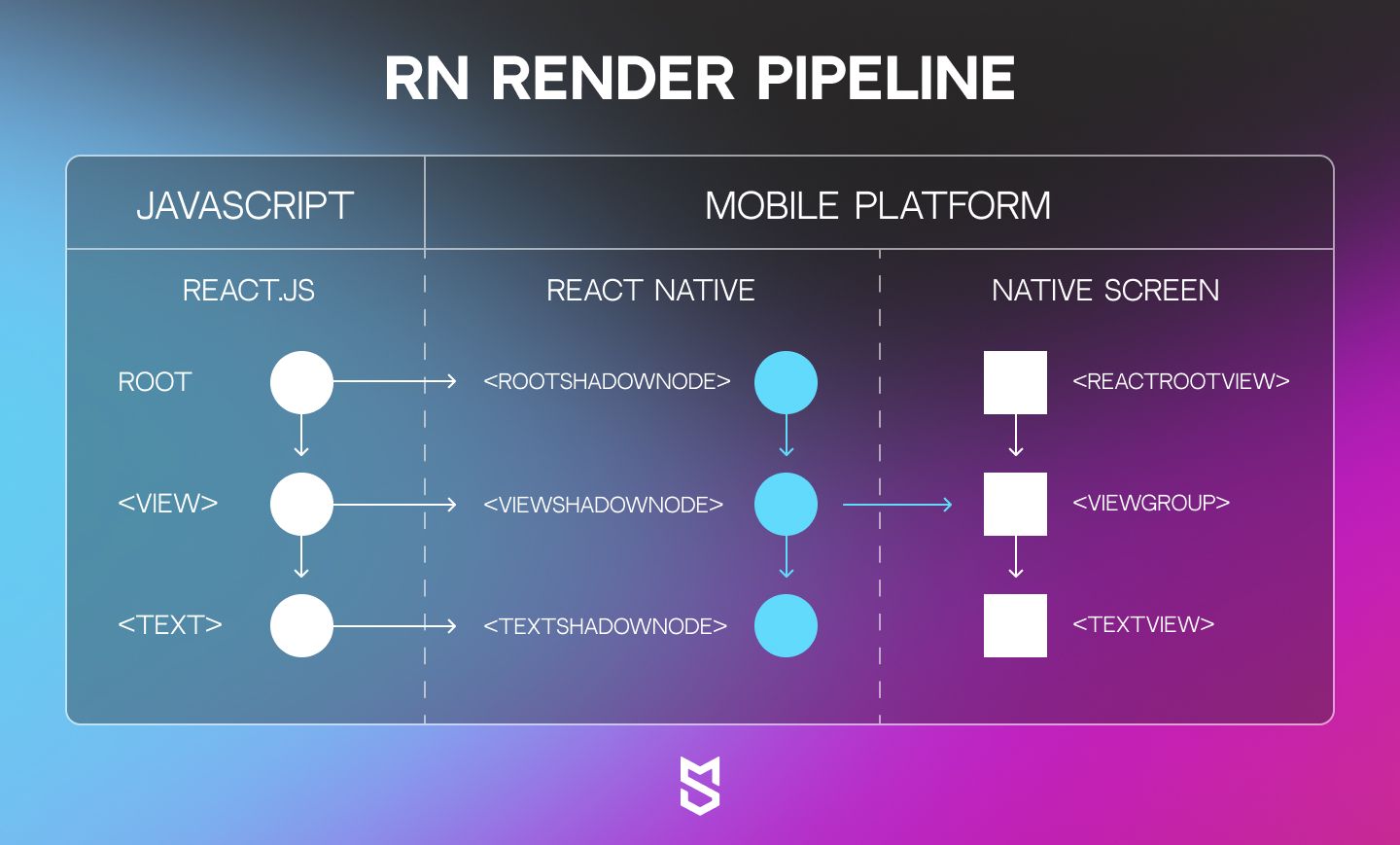
[Source: React native render pipeline]
Similarly to React Native, Kotlin allows for the development of more efficient and less resource-intensive applications. When every second counts, Kotlin is the language to choose. The time required to construct an app using Kotlin is lower than that of React Native since fewer lines of code are required to write and publish functional features.
Ecosystem and third-party libraries
Community support is crucial to adopting and succeeding development frameworks, especially for multiplatform projects that run well on one platform but struggle on the other. Access to third-party libraries can also influence the flexibility of the development process, making or breaking it based on the features you wish to include in your app.
React Native
The React Native community is a vast and thriving ecosystem of developers, contributors, and enthusiasts actively participating in knowledge exchange, issue resolution, and continual framework enhancement. This strong community adds to the availability of a wide range of resources, including tutorials, plugins, and open-source projects, which help React Native practitioners along their development path.
Kotlin Multiplatform
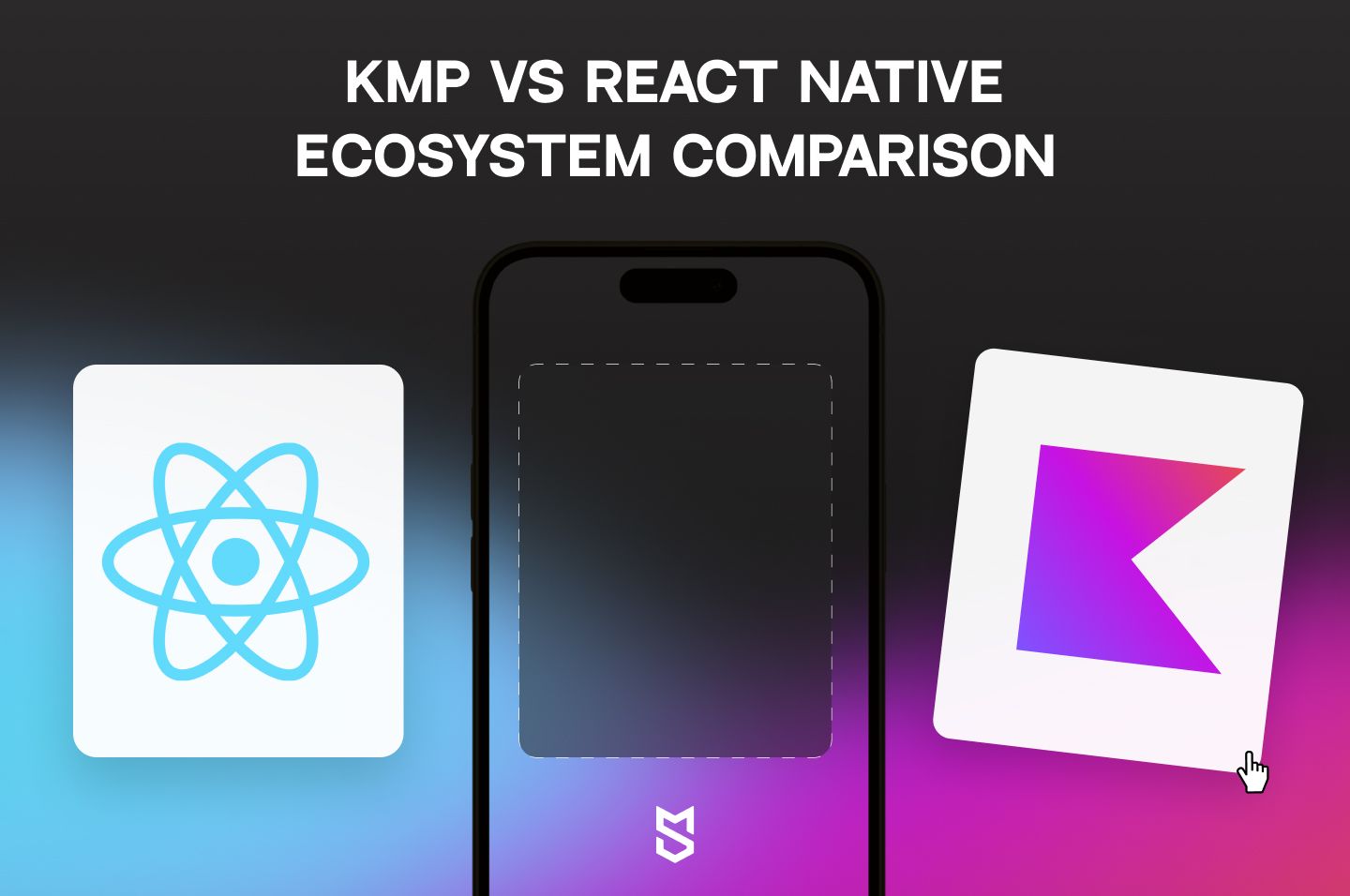
While Kotlin Multiplatform does not currently have as large a community as React Native, it is quickly gaining popularity. After leaving the beta, KMP has gained traction in the Kotlin community, resulting in an expanding ecosystem of libraries and tools designed for cross-platform development.
Currently, the community is vibrant and dedicated, with developers contributing their knowledge, libraries, custom Kotlin web frameworks, and best practices. The community grows as more developers choose it, making Kotlin's future look bright.
Challenges and limitations
It is no secret that even the most experienced developers, with an extensive understanding of multiplatform frameworks, confront obstacles. These issues can be caused by platform constraints, such as Native's reliance on bridges or KMP's limited support. This is how two techniques of cross-platform development appear in comparison:
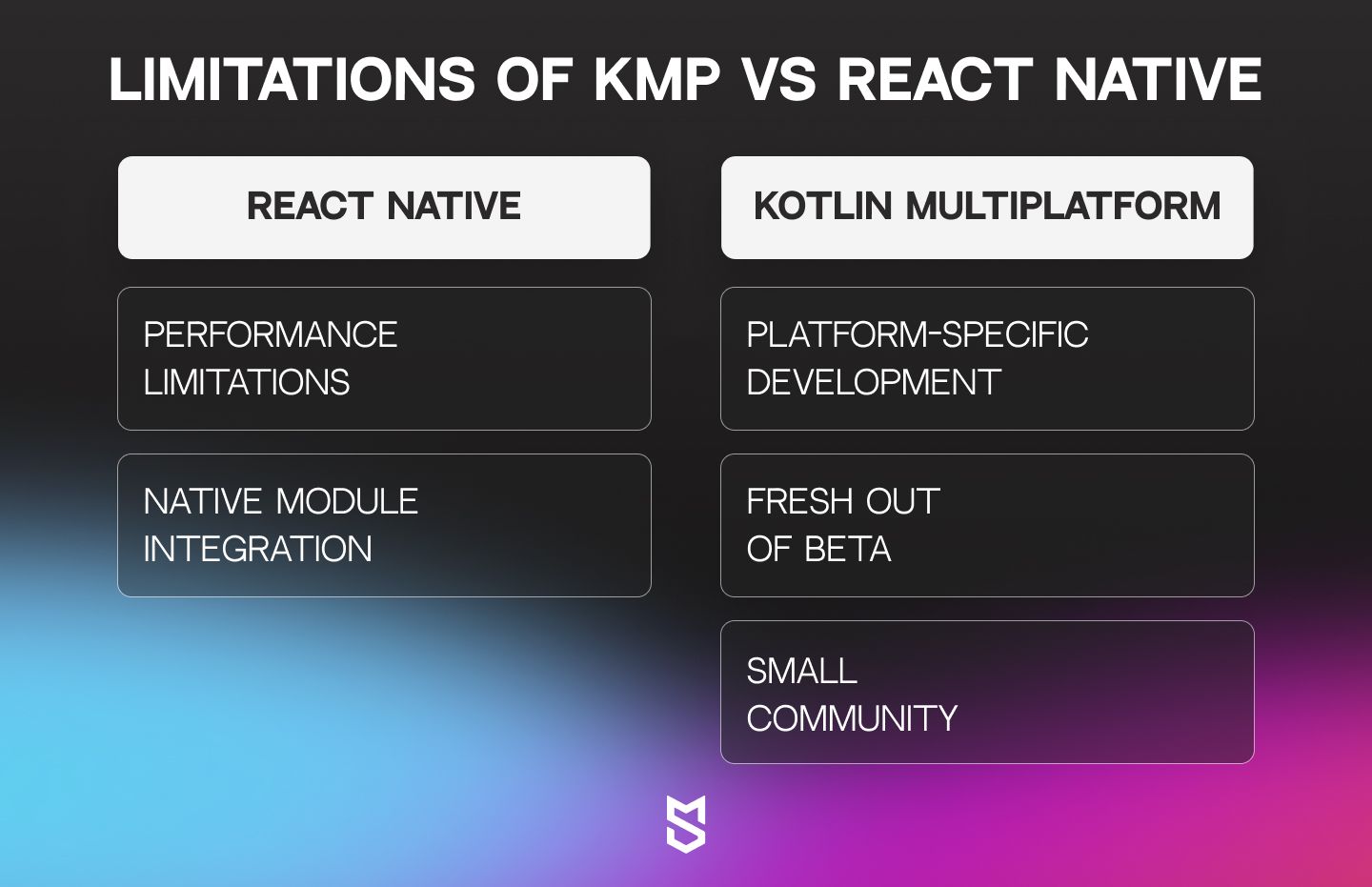
Disadvantages of React Native
Performance limitations: One of the biggest drawbacks of using React is that it is more of a wrapper for the Android and iOS mobile development platforms, and it uses a JavaScript bridge to translate JavaScript into iOS or Android code under the hood.
Because it is utilized as a wrapper, it will degrade performance in the long run. Since React Native apps use a JavaScript bridge to connect with native components, they may operate significantly slower than native apps. Although React Native has improved its speed over the years, it may not be as fast as a genuinely native app in some situations.
Native module integration: Although React Native gives access to a large number of native modules, there may be times when you need to interface with a specific platform feature or third-party library that is not immediately available in React Native. In such circumstances, you may need to create bespoke native code or seek alternate alternatives.
Disadvantages of Kotlin Multiplatform
Platform-specific development: Until recently, Kotlin was used solely for native Android app development. So, if you wanted to build an app for iOS, you had to utilize a different technology, such as Swift, for iOS development. With Swift support, Kotlin is more convenient for iOS app development. However, this support still has caveats that can increase development time and necessitate maintaining several codebases.
A developer with experience in Android development processes can be trained to be familiar with KMP in 3 to 5 months, making it an acceptable compromise for mobile teams seeking greater flexibility.
Fresh out of beta: Kotlin Multiplatform came out of beta in October 2023. According to JetBrains, it is already safe to use in your projects. Despite the many tools accessible in the SDK, it is important to note that this technology is still in its early stages, but it will only get better! Some API modifications are likely, but there is a strong emphasis on reducing potential migration concerns as of the time of writing.
Small community: Kotlin Multiplatform is also in its early stages, therefore there are far fewer resources available to learn from than React Native. Developers might need more time to solve an issue because they are among the first to encounter it.
Case studies and success stories
For a long time, React Native was the go-to framework for building mobile apps. That said, KMP has become a strong contender recently, and many examples of their use and success exist. Many small and big organizations have improved user experiences and streamlined cross-platform development using these frameworks, as shown in the examples below.
React Native
Thousands of apps use React Native, ranging from established organizations to hot new startups. Aside from Meta's platforms, the most noteworthy organizations that use React Native for cross-platform development include but are not limited to Microsoft, Amazon, Wix, Walmart, and Pinterest. Below are a few examples of how React Native can improve user experience:
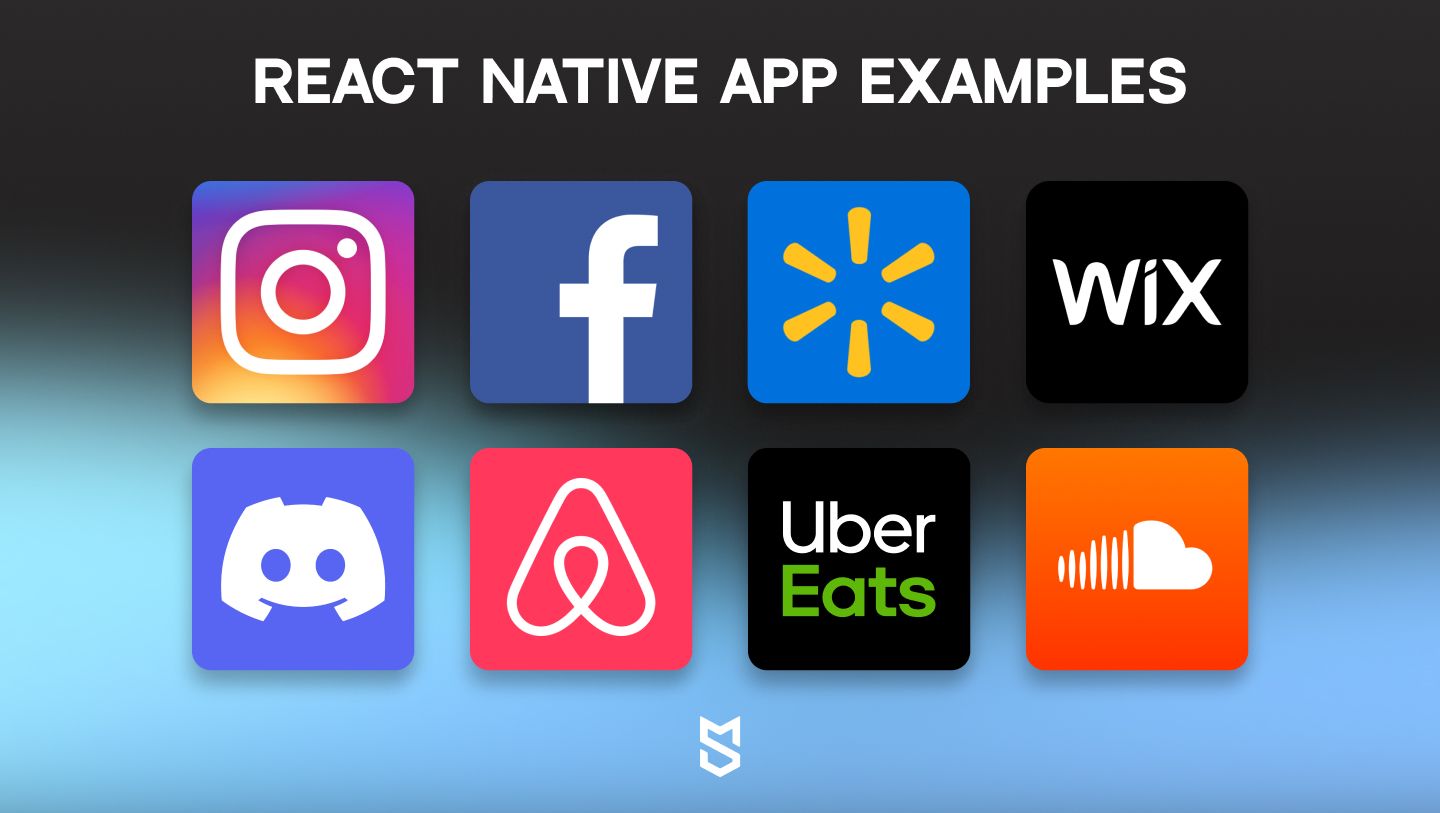
Instagram's move to React Native was nothing short of impressive. It began as a basic photo-sharing app but has now evolved into an interactive platform with millions of users engaged daily. Instagram has improved the user experience by adopting React Native for interactive features such as Stories, Reels, and IGTV, which now operate almost flawlessly across both Android and iOS platforms with minimum codebase divergence. That is hardly unexpected, given Meta's significant investment in its photo-sharing platform.
Airbnb
Airbnb's dedication to offering a consistent user experience led to a shift to React Native. This enables a single technical team to handle the code on many platforms, eliminating development redundancy. What was the result? Unified engineering with React Native helped deliver a better user experience that has received praise for its sleek, native-like interactions.
Discord
Discord, a prominent chat network, used React Native for quick mobile app development. This allowed them to increase their user experience and dependability across all platforms. React Native's cross-platform code streamlined development while also making maintenance and adding new features easier.
This enabled Discord to introduce numerous new features, improve the user experience, and become a favorite among gamers and other communities. Today, it is a hugely popular React native app among community members.
Kotlin Multiplatform
Today, many major companies rely on KMP for cross-platform project development, from integrating existing apps to creating new ones entirely. We recommend KMP to our clients since it offers great flexibility in development, and there are numerous famous examples, like Forbes, McDonald's, Netflix, 9GAG, Phillips, Autodesk, Meetup, Memrise, and others. Nonetheless, we wanted to showcase CashApp's experience because they have been steadily incorporating KMP since 2015 and currently use KMP and its tools across all of their platforms.
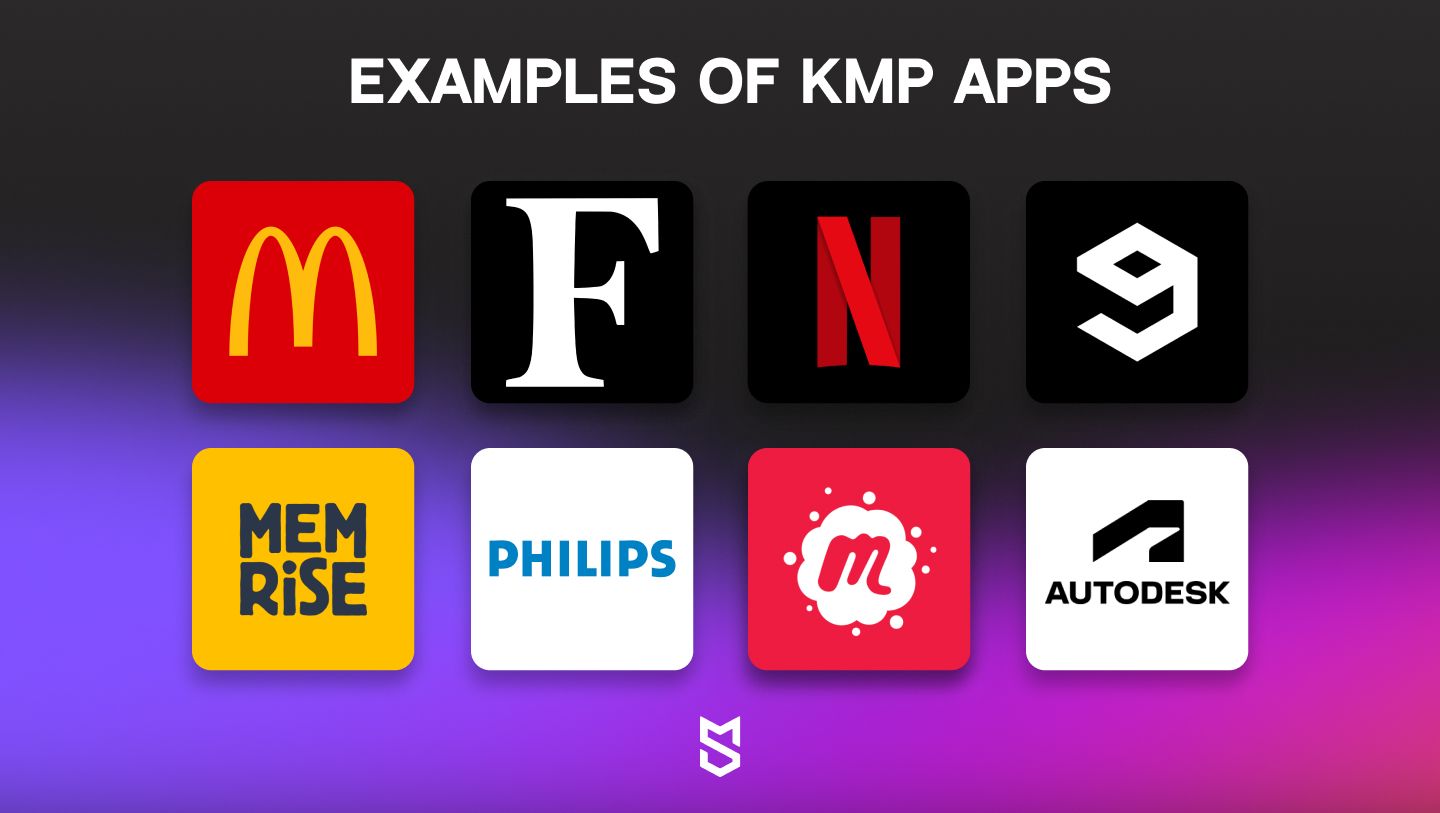
CashApp
CashApp software's transition from a simple peer-to-peer payment software to a comprehensive financial platform with millions of users demonstrates its dedication to innovation and accessibility. By embracing Kotlin Multiplatform, they could streamline their development process, improve cooperation between Android and iOS teams, and maintain a single codebase without sacrificing developer happiness or productivity.
The decision to use KMP for shared business logic solved the obstacles presented by JavaScript. It enabled teams to operate more efficiently and effectively. Cash App's integration of tools such as SQLDelight and CrashKiOS improved their development workflow and the user experience.
Cash App's effective integration of KMP into its ecosystem has streamlined its codebase while paving the path for future growth and innovation. The team's growing interest in and use of this technology demonstrates how positively it has impacted their development process. Cash App's experience with Kotlin frameworks can serve as an example for other firms wishing to improve cooperation, streamline development, and maximize the potential of their mobile applications.
Final thoughts
To sum up, Kotlin Multiplatform and React Native are both strong options for developing multi-platform apps. Picking one over the other is a matter of weighing your project's requirements. React Native is great for projects where app’s speed isn't crucial or money is tight. On the other hand, Kotlin Multiplatform is a great choice for people who appreciate performance and want to make sensible budgeting decisions.
If you're considering using KMP for your next project and are just getting started, you should consider hiring KMP professionals like Mind Studios. We have the necessary expertise and experience to take your project from concept to completion.
To successfully balance aspects like performance, community support, and development experience, it is essential to understand the intricacies of each framework. In the long run, your project needs and objectives will determine whether you choose the efficiency of KMP or the adaptability of React Native.
Do you still need help deciding on a framework? Contact our experts for a free consultation; our specialists will thoroughly examine your project and give you the necessary advice.

